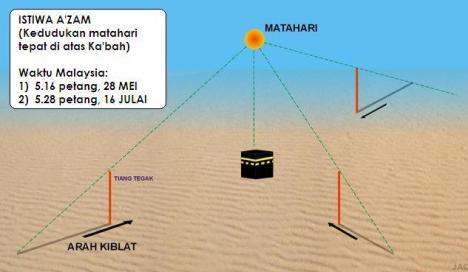Bayi baru lahir — Boleh mendengar dan membezakan sama ada bunyi datang dari kiri atau kanan. Mereka akan menggerakkan kepala ke arah sumber bunyi. Bayi anda juga sepatutnya boleh memberi tindak balas kepada bunyi perlahan. Bayi mula senyum dan menunjukkan gerak balas kepada seseorang pada umur sebulan dan mengenali suara ibu bapa pada umur satu hingga 2½ bulan
Tiga hingga enam bulan — Bayi boleh meniru bunyi percakapan
Empat hingga lapan bulan — Bayi menyebut satu suku kata (contoh ba, da, ga, gu)
Lima hingga sembilan bulan — Bayi menyebut beberapa suku kata berulang-ulang (contoh bababa, lalala)
Enam hingga 10 bulan — Bayi mula menyebut perkataan mudah yang kerap didengar (emak, ayah, tak)
Lima hingga 10 bulan — Kebanyakan bayi boleh menyebut mama, dada — yang tidak hanya merujuk kepada ibu dan ayahnya
Enam hingga sembilan bulan — Kebanyakan bayi boleh mengikut atau mematuhi arahan pendek yang disertakan dengan pergerakan badan atau tangan. Contohnya meminta dia memegang objek atau tangan anda. Dalam lingkungan umur tujuh hingga 11 bulan, bayi sepatutnya boleh mematuhi arahan ringkas tanpa perlu ditunjuk dengan tangan
Tujuh hingga 12 bulan — Sudah pandai menggunakan perkataan mama, emak atau ayah dengan betul
Sembilan hingga 14 bulan — Biasanya sudah boleh menyebut satu patah perkataan (selain emak, ayah)
10 hingga 15 bulan — Sepatutnya bayi boleh menunjuk ke arah objek yang dikehendakinya
11 hingga 20 bulan — Anak anda seharusnya boleh menyebut empat hingga enam perkataan (selain emak, ayah atau nama adik beradik)
14 hingga 21 bulan — Si kecil boleh mematuhi arahan dua langkah tanpa bantuan pergerakan tangan (contoh ‘Duduk di sini dan makan’). Pada umur 14 hingga 18 bulan, dia seharusnya boleh menunjukkan dua atau lebih anggota badan dan meningkat kepada enam anggota badan pada umur 22 bulan
16 hingga 20 bulan — Kanak-kanak boleh menyuarakan kehendaknya dalam satu perkataan (jus, susu, lagi, banyak)
18 hingga 22 bulan — Si kecil sudah boleh menggabungkan dua perkataan atau ayat mudah seperti ‘hendak susu’ atau ‘mahu lagi’
16 hingga 24 bulan — Kanak-kanak seharusnya sudah boleh menguasai lebih 50 patah perkataan
19 hingga 26 bulan — Menggunakan perkataan saya, awak walaupun kadangkala terbalik. Kebanyakan kanak-kanak boleh menyebut perkataan dengan baik apabila berumur 30 bulan
24 bulan — Percakapannya boleh difahami separuh oleh orang lain atau individu yang jarang berjumpa kanak-kanak berkenaan
24 hingga 32 bulan — Boleh menamakan empat gambar
26 hingga 32 bulan — Boleh bercakap dalam dua hingga tiga ayat mudah
27 hingga 34 bulan — Boleh memahami dua arahan dalam satu ayat contohnya ‘Letak cawan di atas meja atau sebelah buku’
29 hingga 34 bulan — Boleh menamakan dan kegunaan sekurang-kurangnya dua objek. Kanak-kanak seharusnya boleh mengenali satu warna pada umur 2½ hingga 3¼ tahun dan empat warna pada umur tiga hingga 4½ tahun
Tiga tahun — Hampir 75 peratus pertuturannya boleh difahami orang yang jarang bertemu kanak-kanak ini. Pada umur ini mereka boleh menguasai lebih 250 perkataan. Pada umur empat tahun, percakapannya seharusnya boleh difahami sepenuhnya dan mampu menguasai 600 perkataan
Saringan pendengaran boleh dilakukan pakar kanak-kanak melalui satu ujian mudah (audimetri) apabila mereka boleh memberi kerjasama (biasanya selepas umur empat tahun). Kanak-kanak (dari dilahirkan hingga empat tahun) perlu berjumpa pakar pendengaran untuk ujian selanjutnya.
Jika anda fikir anak anda lewat bercakap, bawa si kecil untuk jalani ujian pendengaran. Pada masa sama kanak-kanak yang ada masalah lewat bercakap juga perlu dirujuk kepada pakar terapi pertuturan atau pakar psikologi jika perlu secepat mungkin.
Pada masa sama ibu bapa juga boleh membantu meningkatkan percakapan anak dengan:
Membaca buku kepada anak, terutama buku bergambar di mana anda boleh mengajaknya untuk menunjuk atau menamakan objek
Gunakan bahasa mudah apabila bercakap dengan anak, dibantu dengan gerak badan atau tangan. Tanya banyak soalan kepada anak. Pastikan anda ‘bercakap’ dengan si kecil dan bukan memberi arahan
Beri tindak balas segera apabila anak bercakap untuk memberi dorongan kepadanya
Ulang perkataan atau ayat anak anda dengan menambah beberapa perkataan lagi bagi memanjangkan ayat berkenaan
Sabar melayan anak dan jangan marah jika dia melakukan kesilapan. Beri masa untuk anak menghabiskan ayatnya
Jangan paksa anak bercakap.
































 Kuala Lumpur Time
Kuala Lumpur Time

